Flint Rep Design Teams Turn Big Dreams Into Splashy Productions
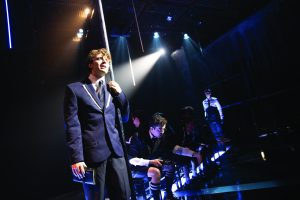
FIM is home to a variety of venues and programs, each with their own purpose and style. The Capitol Theatre, a landmark of Flint’s historic downtown, presents world-class concerts and hosts community events. Whiting Auditorium, with its broad proscenium stage, was conceived and built as a concert hall for the Flint Symphony Orchestra and is also a hub for Broadway tours. And nestled across Kearsley Street, cozied up to Longway Planetarium, is Elgood Theatre, home of the Flint Repertory Theatre.
Big explosions in a tiny room
Black-washed and barren between productions, the peninsular stage space is bordered on three sides by a mere 120 seats. Like a blank canvas, Elgood Theatre may not be much to look at but is brimming with possibility.
Michael Lluberes, producing artistic director for Flint Rep, has been at FIM since 2017 and says he fell in love with the space right away. “There is something magical about [Elgood]. It can feel both intimate and epic,” he says. “Intimate because everything is right in front of you; it has forward momentum and the action is sent right into the audience. And epic because of the vaulted ceilings … it feels like you can reach up to the stars.”
While some might see the small size of the theatre space as a limitation, Lluberes finds freedom in the restriction it creates — a perspective that permeates his creative process. “I am interested in containing something and creating rules,” he says. “When you put limitations on an idea, it creates freedom. And I like to think of every production as a big explosion in a tiny room. Doing something that you wouldn’t think could be in that space really excites me.”
Anyone who has seen Elgood Theatre transformed into the set of a Flint Rep production has seen this freedom at work.
In the 2023 production of Ragtime, the stage was transformed into a vintage proscenium, reminiscent of an early 20th century theatre, crumbling at the seams. Before that, the 2019 production of Into the Woods used a minimalist design comprised of metal risers and ropes — representing wishes — in tandem with sophisticated lighting and costume designs to create the skeleton of a familiar fairy tale world.
Most recently, Elgood’s thrust stage was transformed into the set of Spring Awakening, which took place in alley-style, like a catwalk, with audience seating on opposing sides. “Spring Awakening was a ‘light’ show — and it’s about architecture,” Lluberes says, explaining that prioritizing a single design element or two helps focus the creative effort for the show.
“I always start by asking what is ‘the event’ of the show?” he says. “What reason are we giving people to leave home and come to the theatre? What are the big gestures? Then we work to invest our time and money into those things.” This includes hiring the right team of designers to bring each element to life.
While Lluberes oversees the artistic direction of each show, he would describe his role as a conceptual one, in which he dreams up big ideas and hires the right creative team to make them a reality. “It’s like throwing a dinner party and making sure all the right guests are invited,” he says of hiring a design team. “Who are the right people to tell this story?”
The dinner table for a show includes the right director and some combination of scenic, lighting, costume, props, sound and even projection designers. Like any good party, the fun begins when guests start getting to know one another.
“Everything starts with a dream, a vision, then turns into logistics,” says Lluberes. “I love getting a whole group together to figure out how we can do this. This is the budget we have, the time we have, the space we have. How can we make the dream a reality?”
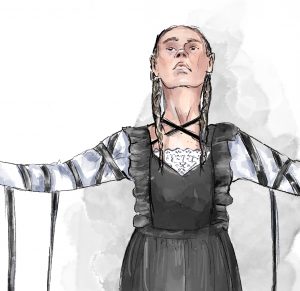
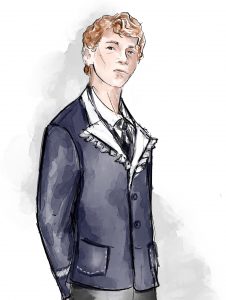
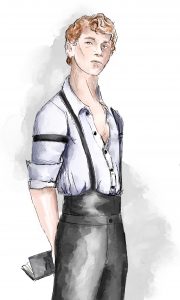
Costume design by Matt Shellgrove for Spring Awakening
Making a splash
The next dream on the horizon is a reimagined adaptation of Stephen Schwartz’s pop-rock musical, Godspell, which premiers on September 27. Lluberes will be directing the show himself and has chosen a fluid artistic concept.
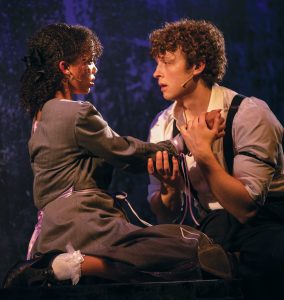
“There is a baptism in the show,” explains Lluberes, describing the seed of inspiration that has grown into his newest vision. “So, I thought, why not make the whole thing a baptism? It could be a fun way to see this classic musical in a way you’ve never seen it before.” And this baptismal experience will take place in a literal pool of water, with the audience on three sides — if all goes as planned.
While the idea of turning the Elgood stage into a pool might sound a little outlandish, it is just one of many productions in which Flint Rep has explored a communal relationship with H2O. After reopening the former Flint Youth Theatre space as Flint Repertory Theatre in 2018, the first production by the new company, The Boatman, took place in the waters of the Underworld. In 2022, Wrong River explored the Flint Water Crisis, and even the 2023 production of Rain on Fire used water elements as a means of both consequence and cleansing amidst themes of death and drug addiction.
“Flint’s relationship with water is always interesting territory to explore,” says Lluberes, adding that his Flint audience is always top-of-mind when planning season programming. “And this season I wanted to open with something hopeful, healing and joyful about community. I thought Godspell was the perfect thing because it is a community formed around telling stories, which is what theatre is all about.”

of Spring Awakening
Ok … but is it even possible to stage a production in a giant pool? Lluberes, by his own admission, does not easily accept “no” for an answer.
“You find things within the limitations,” he says with enthusiasm. “You set goals and figure out how to make it work. How will we build a pool? How will we keep it clean? Where will we put the band? How will we mic it? There are much smarter people than me who figure that out.
And we all love the challenge of making it work.”
Teamwork makes the dream work

Eli Sherlock is one of those “smarter people.” A Los Angeles-based production and scenic designer, Sherlock has made a reality out of Flint Rep dreams for productions such as Ragtime and Little Shop of Horrors in Concert, and most recently, Spring Awakening.
“[Flint Rep] is a small but mighty group of people, and they are excited to take on daunting and ambitious asks from the creative team,” says Sherlock, who praises Michael’s reluctance to say “no.” “Everyone who’s a part of the Flint Rep team is always excited to figure out how to make it happen. The artistic freedom mixed with that ‘yes and …’ attitude is really the jackpot for making exciting and fulfilling work that I can take pride in, and it absolutely keeps me coming back again and again!”

Chelsie McPhilimy, a lighting designer based in New York City, has also been in frequent residence at Flint Rep. McPhilimy has roots in the Flint area and has enjoyed the Flint Cultural Center since she was a child, so she finds privilege in giving back to the community that played a crucial role in her development as an artist. But it’s the opportunity to stretch her creative muscles through innovative work with the supportive creative team at Flint Rep that keeps her coming back.
“I consistently have the support and encouragement to test out new ideas and explore lighting in ways I have been unable to at other theaters,” says McPhilimy. “I adore the people I have the privilege to work with here in Flint. It is not often that you find a community that is so supportive and eager to collaborate.”
Both designers would agree that collaboration is the most exciting component of what they do. “We work collectively to create the world of the piece on stage and provide a cohesive experience for our audiences,” McPhilimy explains. “My absolute favorite part of being a designer is the collaborative nature of the work.”
“Being a part of a team that’s all focused on telling the same story, and each of us approaching it from a different [design] direction makes for an incredibly rewarding experience,” adds Sherlock. “Especially when we see our ideas meld and shift to become fully interwoven concepts.”
Sherlock says he is not a very “realistic” designer, noting that the emotion of the story motivates his designs. And he finds daily inspiration in the world around him. “Staying open to experiences — music, art, people, places, nature, materials, light, really anything — is a constant practice that I engage in,” he says. “When I’m feeling stuck, I always look to people first to see how they move through space, and then most often to sculpture.”
That’s where McPhilimy and other designers come in. “As a lighting designer, I bring notions on how the world of the piece will be sculpted with light,” she explains, referencing her recent collaboration with Sherlock on Spring Awakening. “Eli and I looked at various options for illumination through the panels in the stage deck, the final iteration creating distinctive paths and spaces for [the director] to play with,” she says.
“I love being able to create scenery that excites and surprises audiences,” says Sherlock. “I love getting to the meat of the story we’re telling and designing scenery that reflects and augments what the characters and the audience feel, as much as setting a scene of where and when we are.”
Lluberes would argue that this quest to reinvent a story by capturing its essence through new mediums is the magic that sets an audience experience at Flint Rep apart from other forms of entertainment.
“If you can see it on Netflix, then we shouldn’t be doing it here,” says Lluberes, emphasizing that nothing can compare to the experience of live theatre executed well.
“There is truly nothing better than when it works. Characters are alive right in front of you. And you’re experiencing it all with other people,” he says. “Being in a room with other people — breathing together, listening together and coming together as a community for two hours — it’s so exciting.
“When it all comes together and it works — the music, the lights, the costumes, the set, the actors, the direction, the performance — it’s the most thrilling thing in the world.”
On stage next
-
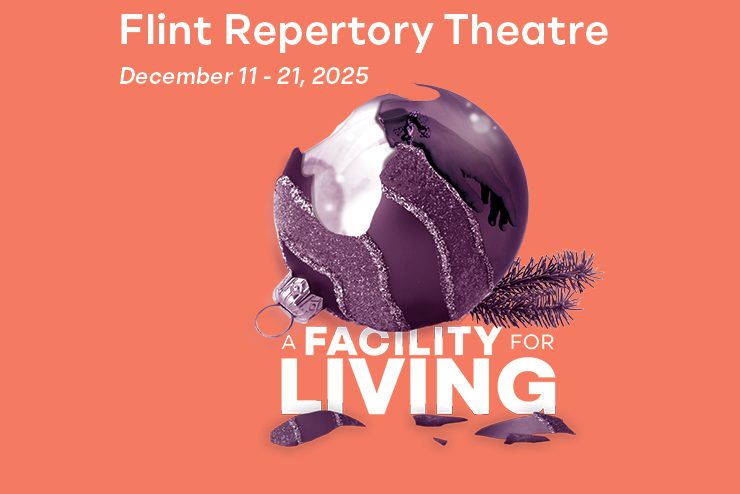 TicketedFlint Repertory Theatre
TicketedFlint Repertory TheatreA Facility for Living
Location: University of Michigan-Flint Theatre -
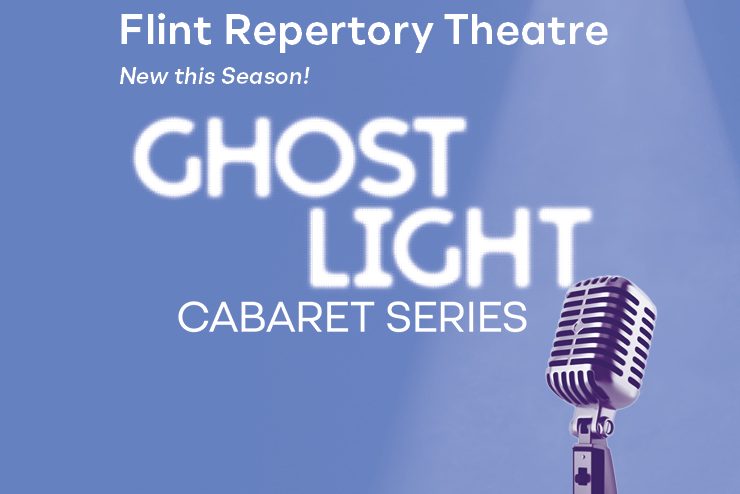 TicketedFlint Repertory Theatre
TicketedFlint Repertory TheatreGhost Light Cabaret: Wonderful: A Tribute to Stevie Wonder
• 7:30 PMLocation: Elgood Theatre -
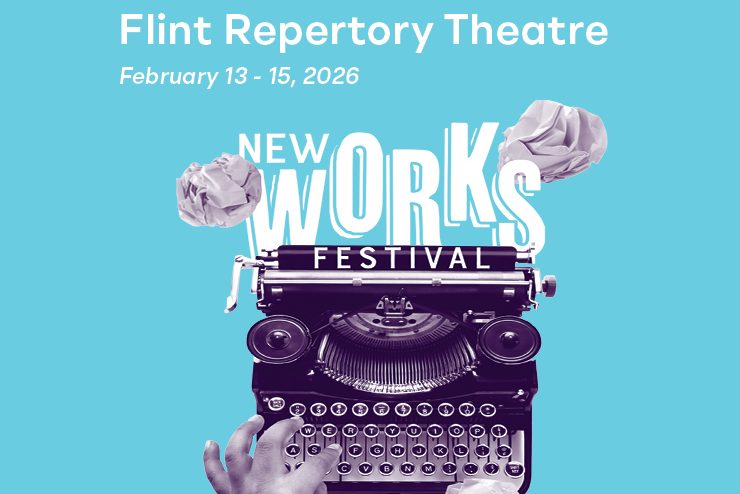 TicketedFlint Repertory Theatre
TicketedFlint Repertory TheatreNew Works Festival
-
 TicketedFlint Repertory Theatre
TicketedFlint Repertory TheatreGhost Light Cabaret: Women Who Rock
• 7:30 PMLocation: Elgood Theatre